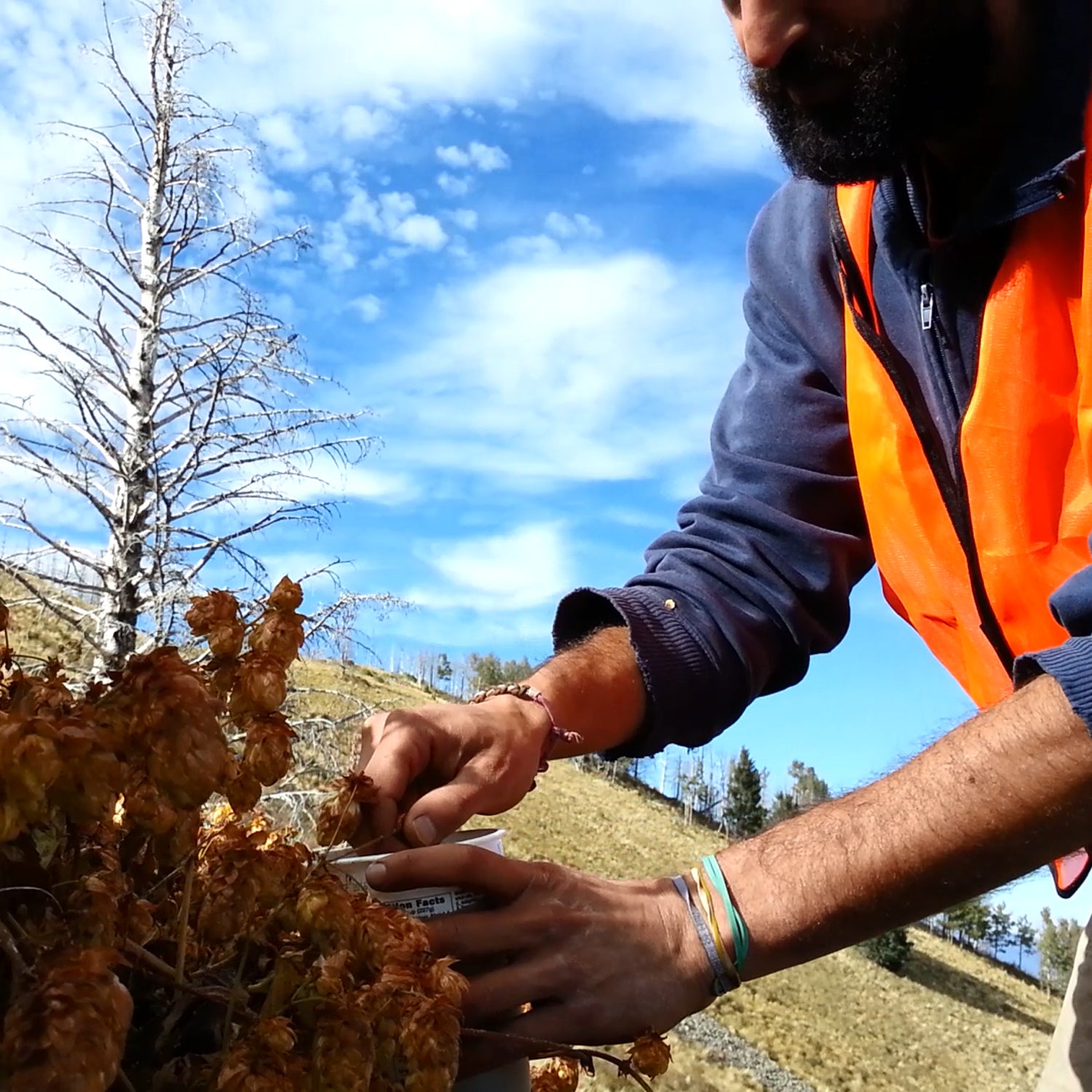For a few weeks every year, Taylan Morcol, a PhD student in biology at the City University of New York, heads out into Arizona’s Sky Islands, a group of mountains near Tucson known for their biological uniqueness. Armed with old botany records, a GPS, and intel from the locals (if he’s lucky), Morcol spends his days searching the backcountry for new kinds of hops that may someday save our beer.
I don’t want to cause mass hysteria, but a changing climate will not be kind to the varieties of hops, like Saaz, Amarillo, and Yakima, that are responsible for our favorite craft beers. Most of these flowers are sensitive to extreme heat and drought, and they’re water-intensive to begin with, meaning the brews will only get more expensive to produce as popular hop-growing regions like Washington’s Yakima Valley become hotter.
Change is already here. More than a decade ago, Ed Atkinson, who manages AB Inbev’s Elk Mountain Farms, one of the largest hop-growing operations in the nation, had never seen a hailstorm hit at the crucial time when delicate hop cones were about ready for picking. In the past few years, he’s dealt with several.
To save our IPAs, we need to breed a better, hardier hop, and to do that, we need to find varieties that can stand up to new challenges, from drier, hotter summers to more intense hailstorms. Hopsteiner, one of the largest hop growers in the world, thinks drought-, disease-, and even hail-resistant varieties might be lurking in the wild. The company is sending Morcol out with a pack and a map in the hopes of finding our great Humulus lupulus savior.
Wild hop plants, which grow on vines, litter the continental United States. You just have to know where to look, says Paul Matthews, a senior researcher for Hopsteiner. Right now, he and Morcol are focused on the Sky Islands. Jutting out of the desert, the mountains are like tiny, triangular islands—the climate is different enough between the mountaintop and the plain below that organisms evolve in relative isolation. “It’s pretty much the same thing as Darwin’s finches,” explains Morcol. This is the case for most mountains, but the Sky Islands are particularly rich, with the highest biodiversity of inland North America.
Drought-, disease-, and even hail-resistant hop varieties might be lurking in the wide open. Hopsteiner is sending Morcol out with a pack and a map in hopes of finding them.
Matthews says Hopsteiner has been gathering nondomesticated hops for the past 15 years. But the craft movement has made the search more urgent.
For the most part, wild hops aren’t as delicious as those we’ve carefully domesticated. Many have an oniony or garlicky stank to them; some are downright funky. A few breweries, like Sierra Nevada, have , but it takes an experienced hand to produce a good final product. Matthews says there still aren’t good examples of a wild trait that has helped hone a commercial product. But the drought-resistant qualities of some wild Southwestern hops, including the neomexicanus plants first found in New Mexico, offer hope for planting in increasingly dry conditions.
Morcol’s mission isn’t centered solely on creating new products. Both he and Matthews also hope to preserve genetic diversity. When they find a new strain, they sequence its genetics and offer the data to local and regional germplasm repositories—gene banks for plants. The goal is to eventually assemble a core group of seeds that will be stored in the Svalbard Global Seed Vault, a crop diversity seed bank housed in a disaster-safe facility. Should we ever have a worldwide nuclear catastrophe, those wild hops will be there waiting for us.
Being a hop savior is tough work. Finding the sprawling vines takes a trained eye. “They’re riparian, meaning they tend to grow near water,” says Morcol. Searching for a water source is usually his first task on hop-hunting trips. He’s not flying completely blind—over the years, other botanists have noted where they’ve found hops. The local botanical gardens generally keep repositories of this information. “There’s a whole lot of homework that goes into this,” says Matthews.
But sometimes the maps others have created are wrong or the hops that were once common in an area have since died. Matthews says the neomexicanis subspecies, in particular, is having a rough time and is disappearing from the crevices it once inhabited. Occasionally, though, Morcol will find the vine has simply picked up and moved a mile or two down the trail—like a family packing up and moving in search of a better neighborhood.
When Morcol does find something new, he systematically picks, stores, and packs it out. He takes no more than 10 percent of the cones or seeds. Generally, that works out to about 20 cones, sometimes fewer if the plant is in rough shape. Then he’ll snip a foot or two of leaf and stem material, which will be pressed tightly between two sheets of paper to preserve it until he can deliver it to the lab.
Morcol and Matthews are acutely aware of how a clinger-on—like a new strain of powdery mildew—could infect the company’s entire operation. Quarantining until a cutting is deemed disease-free is a must. In fact, the threat of introducing illness is one reason the pair discourages amateurs from foraging for wild hops. Both made me solemnly swear that I wouldn’t advocate for home-brew enthusiasts to take up wild hop hunting. Matthews put it this way: “A bunch of folks getting into amateur hop hunting would be catastrophic” for the plants. Without proper gathering and storage techniques, amateurs could do more harm than good to wild hops. There’s also the issue of scarcity. If all of us started making beer from wild hops, we’d soon have few wild plants to pick from.
All this to say: Leave the hop saving to the experts who occasionally risk their safety to do the job. Recently, Morcol spotted what appeared to be a hop vine dangling off the side of a cliff, but the ground was pure scree, and it seemed the ledge might give way if he reached over it. “There was definitely the temptation to reach for that one plant sample, but I had to remember the overall mission.” First thing on his to-do list for his next week of fieldwork is to hit that spot—but this time with ropes and a crew of helpers to make sure he doesn’t end up meeting the same fate that he’s trying to save these plants from: slipping away for eternity.


